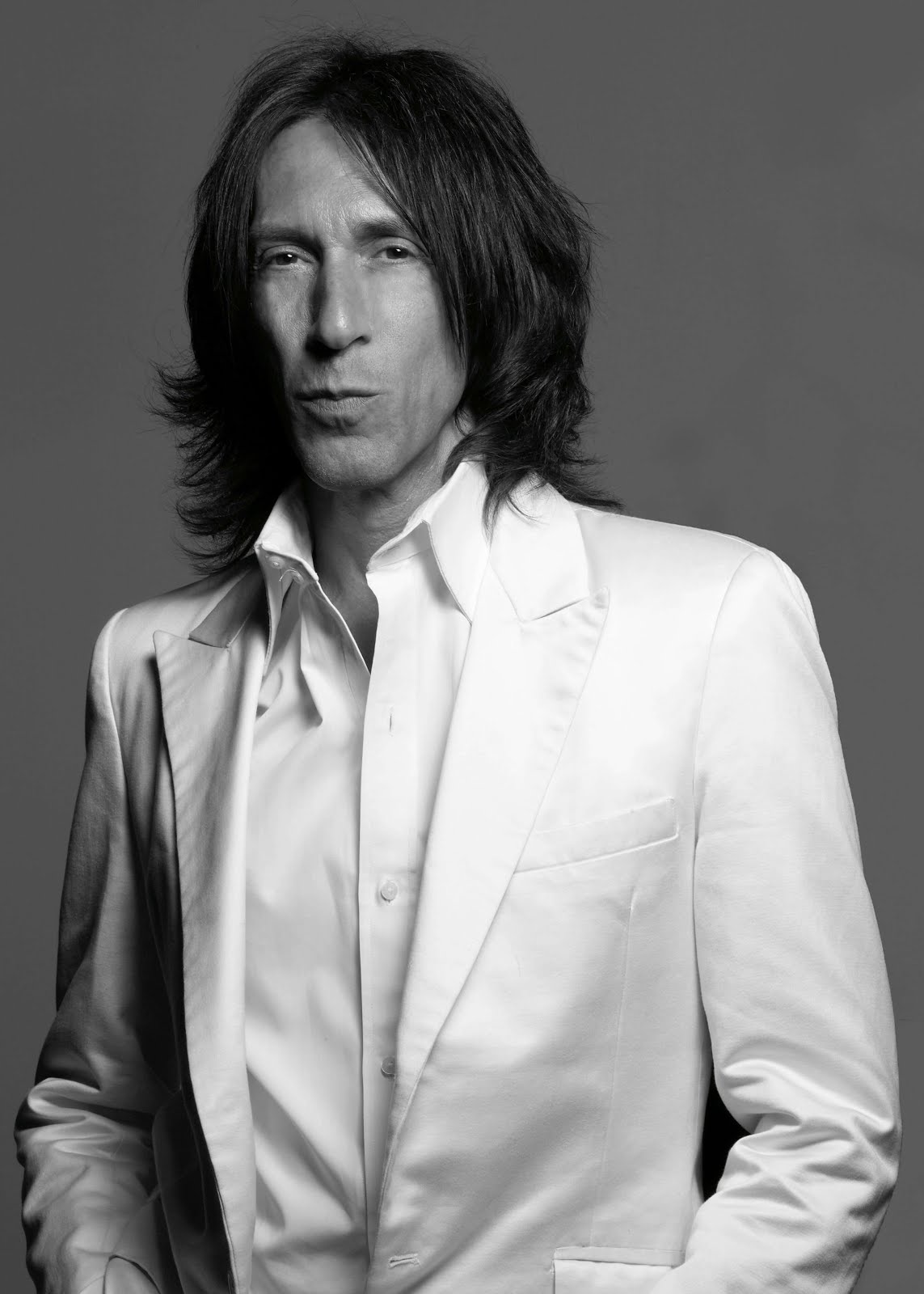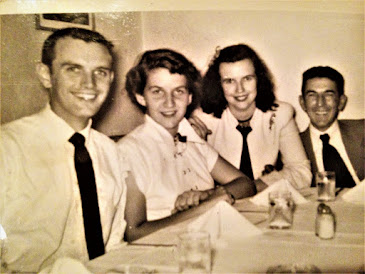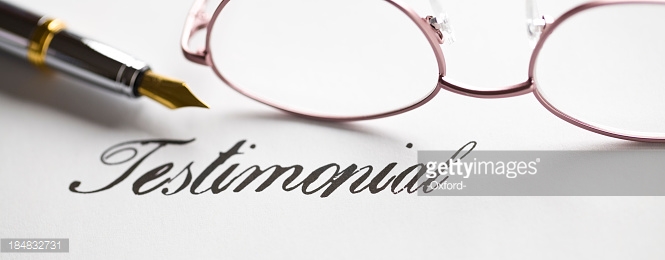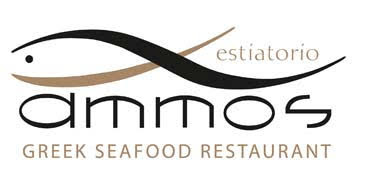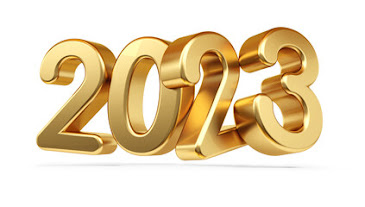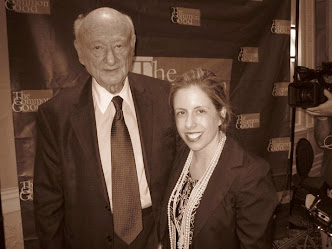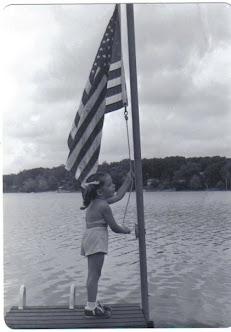NIGHTLIGHT: NEW-YORK HISTORICAL SOCIETY SHOWCASES ACTIVIST ARTWORKS BY ARTHUR SZYK Arthur Szyk: Soldier in Art On view September 15, 2017 – January 21, 2018 Opening Event Starring His Three Fabulous Granddaughters, Whom We Were Pleased To Meet, Especially Sailor Jeanne!
Jeanne Persily, Catherine Talbot and Caroline, sisters and granddaughter of the artist!
NEW-YORK HISTORICAL SOCIETY TO SHOWCASE ACTIVIST ARTWORKS
BY ARTHUR SZYK
Arthur Szyk: Soldier in Art
On view September 15, 2017 – January 21, 2018
It's not who you know, it's WHOM YOU KNOW and we are happy to now know Jeanne Persily, nautical enthusiast (Jeanne, we hope you enjoy Peachy Ahoy.) We met her recently at this exhibit launching in two days at The New York Historical Society. Her grandfather has a great deal of detail in his works, which you will see at the top of the stairs on the second floor exhibit. We appreciated her taking the time to share her memories and point out the intricacies of these impressive pieces, which you should take a look at closely and carefully. We love how the New York Historical Society goes beyond just the work and includes the family of the exhibit subject; see our earlier coverage this summer of Jean Kennedy Smith at her brother's exhibit right next to this one, and Eloise- every girl in Manhattan feels Eloise is family. History is kept alive by people that care and are alive today.
More than 40 gorgeously rendered and politically incisive artworks by celebrated illustrator and miniaturist Arthur Szyk (1894–1951), made during his years in New York City, will be on view at the New-York Historical Society from September 15, 2017 – January 21, 2018 in Arthur Szyk: Soldier in Art.
Featuring works on loan from public and private collections throughout the United States―more than half of which come from the Taube Family Arthur Szyk Collection, The Magnes Collection of Jewish Art and Life, University of California, Berkeley―the exhibition shows the Polish-Jewish artist fighting in his watercolors and drawings as a “one-man army” against Hitler and other Nazi leaders, Mussolini, and Hirohito. Szyk’s brilliant and outspoken works testify to his horror at the ongoing murder of European Jewry, his anger at restrictions on Jewish immigration to British Mandate Palestine, his commitment to American democratic values, and his revulsion to racial injustice in his adopted country. Szyk’s work from the World War II era is the subject of the exhibition, which is curated by Debra Schmidt Bach, curator of decorative arts, with Irvin Ungar, project adviser.
“New-York Historical is proud to exhibit these powerful works by Arthur Szyk, who was outstanding among the European artists who believed so fervently in American democracy and contributed immeasurably to its culture,” said Dr. Louise Mirrer, president and CEO of the New-York Historical Society. “Amid the heated political debates of our own time, our visitors will find that Szyk’s art resonates as profoundly today as it did during the 1940s.”
About Arthur Szyk
Born in Poland to a cosmopolitan Jewish family, Szyk began his journey toward being a “soldier in art” when he moved to Paris as a teenager to train at the renowned Académie Julian. A visit to Ottoman Palestine in 1914 brought him in contact with the Bezalel Academy of Arts and Design in Jerusalem, with its quest to develop Jewish content and form in art. As a loyal Pole, Szyk served in the Imperial Russian Army on the German front during World War I, then became the artistic director of the Polish Army’s Department of Propaganda.
While living in Paris in 1921, Szyk began to create the book illustrations that won him international acclaim, working in a richly colored and highly detailed style reminiscent of medieval and Renaissance illuminations. With Adolf Hitler’s rise to power in 1933, Szyk became increasingly pointed in his art, both in creating illustrations (which sometimes merged biblical and Jewish subjects with political themes) and in making direct commentaries on the Nazi threat. He relocated to London in 1937 to supervise publication of his illustrated Haggadah, and in 1939 his paintings were on view at the Polish Pavilion of the New York World’s Fair, depicting the contributions of the Polish people to U.S. history. Szyk moved to North America in 1940.
During World War II, Szyk poured himself into political cartooning, making works that were published as magazine covers, reproduced as posters, and exhibited in art galleries. Among the many admirers of his work during this period was Eleanor Roosevelt, who wrote in her newspaper column My Day: “In its way [Szyk’s work] fights the war against Hitlerism as truly as any of us who cannot actually be on the fighting fronts today.”
Exhibition Highlights
Among the notable works in the exhibition is a self-portrait in watercolor and gouache from 1944 made as the frontispiece for his book Ink & Blood, in which Szyk portrays himself at his work table with rolled-up sleeves, simultaneously drawing and restraining an enraged miniature Hitler. Tossed into the wastebasket are Benito Mussolini and Marshal Pétain, while other Axis leaders are strewn across the floor.
A 1943 ink and graphite drawing of Hitler, Göring, Himmler, and Goebbels, titled “We’re running short of Jews!” shows the Nazi leaders as grotesques gathered around a report on the ongoing genocide. Szyk made the drawing in response to a World Jewish Congress report released in November 1942 revealing Hitler’s plan to exterminate all Jews in German-occupied territories. He dedicated the work to his mother, who was murdered at the Chelmno death camp near Szyk’s hometown, Łódź.
Other caricatures of the Axis leaders include the watercolor and gouache Murder Incorporated: Hirohito, Hitlerhito, Benito (1941), made in the wake of the attack on Pearl Harbor. A more positive image of resistance to the Axis—the 1942 watercolor and gouache Arsenal of Democracy (also known as Democracy at Work)—shows Szyk returning to his jewel-like style of illumination in tribute to American industrial workers, whose labor was making the Allied war effort possible.
Szyk proudly became an American citizen in 1948 and celebrated the political freedoms and religious tolerance of his adopted nation. As a deeply committed advocate for human rights, however, he created works protesting the brutal discrimination inflicted on African Americans. In Racial Humiliation (ink and graphite, 1944), produced when German defeat was imminent, he imagined a Nazi’s worst nightmare: being captured by an African American G.I. In his later ink and graphite drawing Do not forgive them, oh Lord, for they do know what they do!(1949), Szyk depicts an African American veteran who has been kidnapped by the Ku Klux Klan and is soon to be lynched.
Exhibition Credits
Support for Arthur Szyk: Soldier in Art is provided by Shelley and Steven Einhorn, the David Berg Foundation, the Edward and Sandra Meyer Foundation, and Nancy and Morris W. Offit.
Exhibitions at New-York Historical are made possible by Dr. Agnes Hsu-Tang and Oscar Tang, the Saunders Trust for American History, and the New York State Council on the Arts with the support of Governor Andrew Cuomo and the New York State Legislature. WNET is the media sponsor.
Programs
Public programs provide additional insight into the exhibition. On December 6, distinguished historian Stephen Kotkin discusses Joseph Stalin, exploring the dictator’s brutal forced industrialization of the region and assessing his relationship with Hitler’s Nazi Germany during World War II. On January 17, renowned music historian Leon Botstein and acclaimed curator and art historian Barbara Haskell return to the New-York Historical Society to discuss how the unimaginable tragedy of World War II influenced American art, culture, and music. Curator-led tours of the exhibition will also take place.
About the New-York Historical Society
The New-York Historical Society, one of America’s preeminent cultural institutions, is dedicated to fostering research and presenting history and art exhibitions and public programs that reveal the dynamism of history and its influence on the world of today. Founded in 1804, New-York Historical has a mission to explore the richly layered history of New York City and State and the country, and to serve as a national forum for the discussion of issues surrounding the making and meaning of history.








